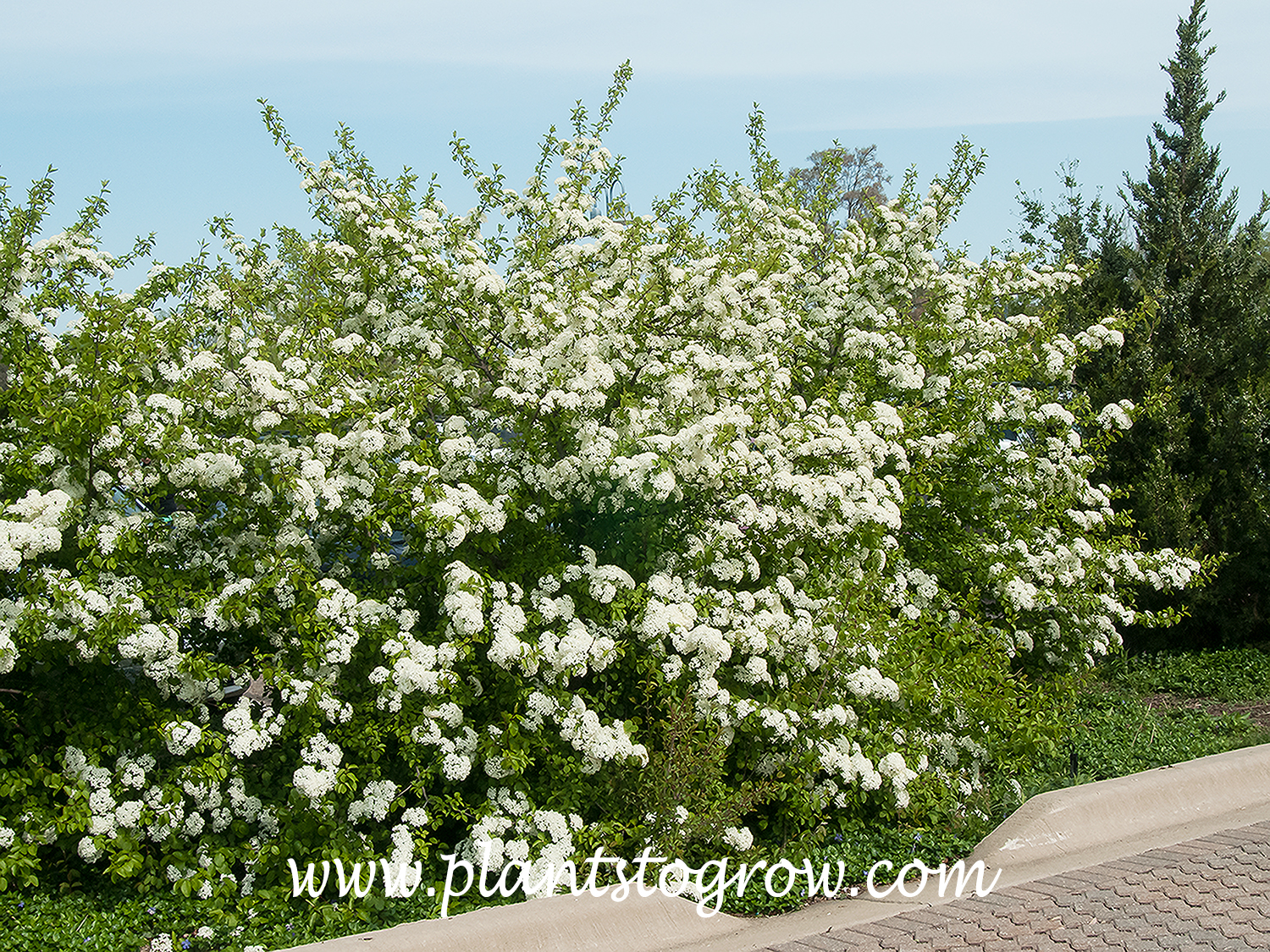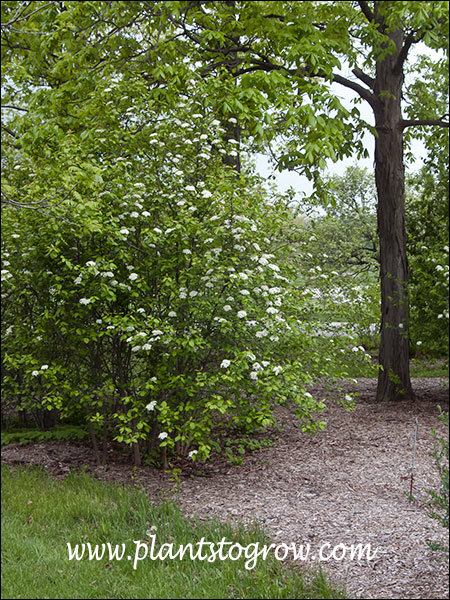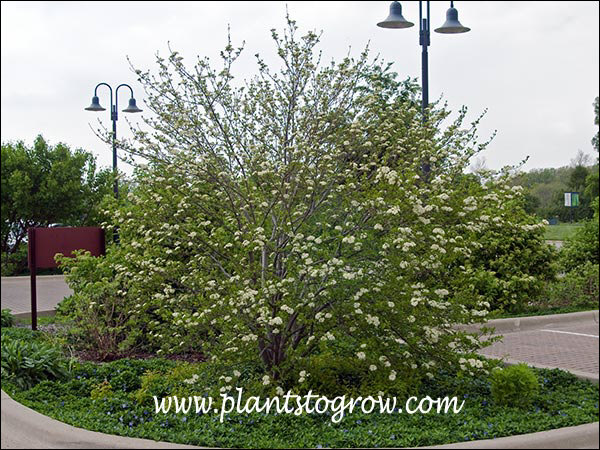| Description | Blackhaw Viburnum (Viburnum prunifolium) is a large ornamental native shrub or small tree with white flowers in May, edible fruit, and red fall foliage. |
|---|---|
| Pronunciation | (vie-BER-num)(prune-ni-FO-li-um) |
| Plant Type | Shrubs Deciduous, Site author's observations |
| Hardiness Zone | 3-6 |
| Sunlight | full sun to full shade but fall colors and flower production is best in full sun. |
| Moisture | average |
| Soil & Site | prefers well drained, moist soils but very adaptable to soil types and ph |
| Flowers | 2.5", creamy-white, flat-topped inflorescences blooming in May |
| Fruit | oval drupes, green ripening to blue-black to blue pink, produced in large amounts and attract birds, fruit is edible. |
| Leaves | medium to dark green, lustrous, elliptical, sparsely to finely serrated, has a smooth-margined, winged petiole, fall color is variable ranging from dark green to red, purple or burgundy, more pronounced in full sun |
| Dimensions | 15 feet tall, spread of 10-15 feet, twiggy dense shrub, single to multiple stemmed |
| Maintenance | pruning after flowering |
| Propagation | seeds, cuttings and division of the suckers |
| Native Site | A native that grows as an understory shrub or small tree in the Eastern and Midwestern United States |
| Cultivar Origin | Introduced in 1727. |
| Misc Facts | Blackhaw refers to the black bark and haw for the plant's resemblance to a Hawthorn tree. AKA: Smooth Blackhaw, Plum Leaf Viburnum, Stagberry |
| Author's Notes | At the Morton Arboretum in Lisle, Illinois (USA), there are many of these planted throughout the Arboretum. In a managed situation where they are allows to spread their wings, they are beautiful specimen or for mass plantings. In 2012 we had a very early warm spring, these plants were loaded with flowers. Their fruit production must have been phenomenal that year. |
| Notes & Reference | #01-Manual of Woody Landscape Plants (Michael Dirr), #106-Viburnums (Michael Dirr), #214-Classic Viburnums (www.classicviburnums.com), #287-The Folklore of Trees and Shrubs (Laura C. Martin), #274-Site Authors' observations and growing experiences of growing Blackhaw Viburnum |

Cart








